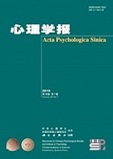|
|
Parameter Estimation of the Raw Item in Computerized Adaptive Testing
YOU Xiao-Feng,DING Shu-Liang,LIU Hong-Yun
2010, 42 (07):
813-820.
Along with the development of computer technology and increasing needs of individual learning, Computerized Adaptive Testing (CAT) has received more and more attention. However, the problem of the test security is becoming a new challenge to the CAT, for example, excessive exposure of the test items might weaken the efficiency and equity of the CAT. Therefore, constructing a large-scale and high-quality CAT item bank is highly demanded
The traditional method of constructing a CAT item bank involves four steps: first, the items are developed by the experts according to the test specification and blueprint; second, a representative sample of examinees is recruited to take the test; Then, the calibration of item parameters and testing of the model-data fit will be conducted afterward. Finally, items of high-quality and its item parameters will be added into the item bank based on the pre-analysis.
However, several problems exist in the above traditional method. First, a large number of test takers are needed, which is time-consuming and expensive. Second, the security of the items cannot be guaranteed in the pilot test. Third, complicated techniques of equating may have to be used to construct a good item bank, which may also affect the security of the items, especially when the anchor items are repeatedly used in the test equating process.
Thus, if the raw items can be seeded in the CAT process and the item parameters combined with the examinee abilities estimated at the same time, it will be significant for the construction of CAT item bank. The research in this area has not been widely conducted and reported in the domestic journals, although this issue has been a big topic for foreign researchers. Thus, This study aims to explore how to insert raw items and estimate the item parameters in CAT and investigate the efficient strategies with high security for enlarging the item bank. A new online calibration method is proposed based on the principle of adaption in CAT, provided there is a small-scale item pool. And the formula of initial value during the stage of the iteration is determined. When the ability parameter has been estimated, the conditional maximum likelihood estimation(CMLE) will be implemented to estimate item parameters in the raw items. First, the difficulty parameter could be obtained through CMLE. Second, the discrimination parameter could be estimated with the abilities and difficulty parameter and the initial value of the discrimination parameter could be gained through CMLE. Third, the difficulty parameter could be estimated when the discrimination parameter and abilities are known .Repeat the second and the third steps until the stop condition is satisfied.
Simulation of Monte Carlo has been employed to estimate the parameters of raw items with the one-parameter Logistic and two-parameter Logistic models in the study and good result has been gained.
Related Articles |
Metrics
|




